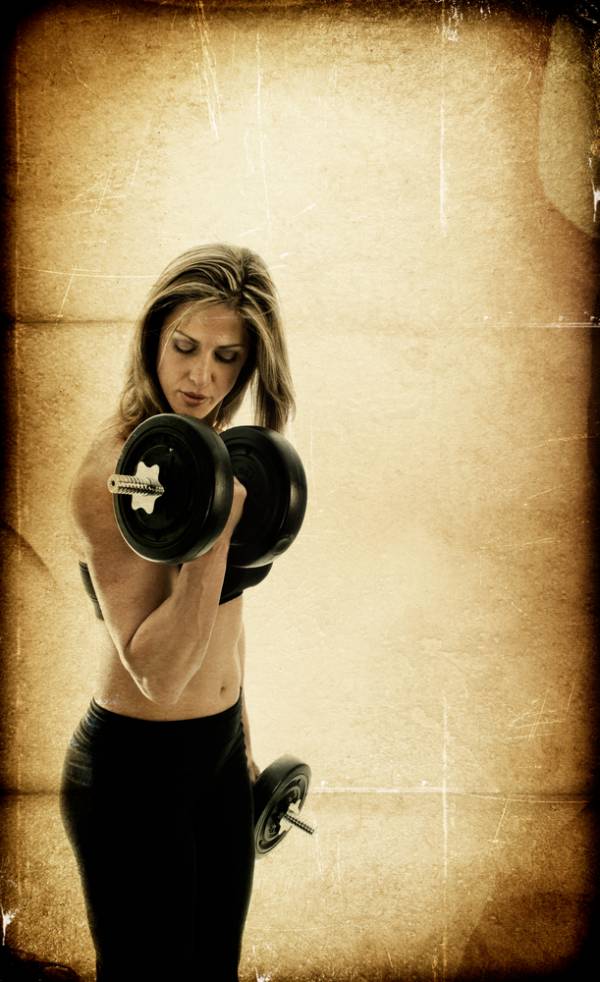I have a confession to make: during college I smoked a pack a day and on many occasions drank well over the recommended one alcoholic beverage per day. Leafy green vegetables and dairy products weren’t exactly staples in my daily diet, and although I did try to exercise a few times a week, it was more to ease my conscience than to build strong bones. So when I learned about the importance of bone strength for women, I knew I had a lot of catching up to do.
Women are more prone to bone loss and bone disease than men. What’s more, healthy bones go hand in hand with strong muscles. Fortunately, studies show that a few wasted years won’t necessarily doom you to accelerated bone loss and disease. One study found women who are active for at least 47% of their adult life tend to have higher bone mass density than those who are less active, so it’s never too late to start. There are three stages when significant bone loss usually takes place.
Pregnancy
During child-bearing years, a healthy diet and regular weight-bearing exercise help prevent excessive bone loss. During pregnancy, the developing baby requires high amounts of calcium to form a healthy, strong skeleton, and if the baby doesn’t receive enough calcium from the mother’s diet, the next source is her bone stores.
Fortunately, the body has an amazing way of making up for calcium losses during pregnancy, and in most cases any lost bone mass is restored after delivery or breastfeeding. According to the National Institute of Arthritis and Muscoloskeletal and Skin Diseases, pregnancy also improves calcium absorption, which is just one other way the body protects women from excessive bone loss in the prenatal stages.
Breastfeeding
Women lose three to five percent of their overall bone mass during breastfeeding, for two primary reasons:
- First, babies have high calcium needs, and if they breastfeed there’s only one place to get it.
- Second, lactating women produce lower amounts of estrogen; estrogen helps protect against bone loss.
Once again, assuming your diet is healthy and balanced, bone loss that occurs during lactation normally resolves itself within six months of weaning.
Menopause
Bone loss accelerates once women hit menopause, due to the significant drop in estrogen that occurs when menstrual cycles end. According to The Journal of Clinical Endocrinology & Metabolism, bone loss can begin well before the onset of menopause. During perimenopause, which can be as little as two or as many as eight years before the end of menstrual cycles, estrogen levels start to decrease. Between the ages of thirty and 35, your body will lose more bone mass than it can replace. That means women ages 35 and older should be particularly conscientious about maintaining strong, healthy bones.
So what are some good ways to build healthy bones? According to Patrice McKenney, CEO of the International Osteoporosis Foundation, “A nutritious calcium and protein-rich diet, sufficient vitamin D and daily weight-bearing exercise are essential components of a bone healthy lifestyle.” These recommendations may seem obvious, but the high rates of bone-related disease and injury in women suggests otherwise.
Experts agree that there are four primary ways to build healthy bones at any age:
- Strive for calcium balance in your diet. Remember that high intake of some foods can actually inhibit calcium absorption. As noted in The Paleo Diet, eating too many legumes, hard cheeses, cereals, eggs, salty processed foods, and even meat and fish can cause high calcium excretion, which causes calcium imbalance and subsequent bone loss. Balance your calcium intake by eating plenty of fresh fruits and vegetables every day.
 Take a daily calcium and vitamin D supplement to make sure you meet the daily requirements. Supplements are particularly beneficial if you’re at high risk for bone loss due to ethnicity (Caucasian and Asian women are more prone to bone loss than other populations), smoking, or certain medications, such as prednisone or cortisone.
Take a daily calcium and vitamin D supplement to make sure you meet the daily requirements. Supplements are particularly beneficial if you’re at high risk for bone loss due to ethnicity (Caucasian and Asian women are more prone to bone loss than other populations), smoking, or certain medications, such as prednisone or cortisone.- Get at least twenty minutes of weight-bearing activity every day, especially if you’ve already reached menopause. As noted in The Journal of Clinical Endocrinology & Metabolism, lack of exercise accelerates normal bone loss rates in the menopausal stages.
- Get some sun! Sunlight stimulates vitamin D production, which works with calcium to build strong bones. Adequate sun exposure is especially important if you don’t get enough vitamin D in your diet, although a combination of the two is ideal, as reiterated at the 2012 Annual Meeting of the American Academy of Dermatology.
Ladies, let’s face it: the odds are against us when it comes to bone loss. According to the International Osteoporosis Foundation, 61% of osteoporotic fractures occur in women. Menopause is inevitable, and hormones are just wacky sometimes. However, although bone loss may be a normal part of the aging process, it doesn’t have to cause problems. Prevent accelerated bone loss and related conditions with a healthy diet, regular exercise, sun exposure and supplements if needed.






